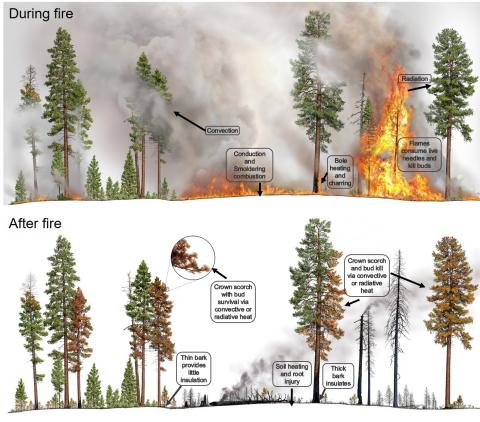This project is a continuation and expansion of several past research projects on fire-induced tree mortality. Please see individual project page for details on specific projects (Douglas-fir and Fire, Post-fire Tree Mortality, Wildfire effects in grand fir-hemlock forests).
Tree mortality is an obvious and important consequence of fire in forested ecosystems. Yet our understanding of how fire kills trees is surprisingly rudimentary. Current models of fire-induced tree mortality use simple linear models optimized for a small set of commercially important species and most incorporate only single parameters for defense (bark thickness) and injury (crown scorch). Not surprisingly, the utility of these models have been called into question by managers and scientists. Crucially, we lack an understanding of the direct and indirect role of climate in determining post-fire tree mortality. This gap in understanding greatly limits our ability to accurately predict mortality from fire and extrapolate to novel climates, which in turn limits application of appropriate management actions to increase forest resilience to wildfire and estimate fire-caused feedbacks to the global carbon cycle.
We are conducting the first continental-scale characterization of climatic influences of fire-induced tree mortality using an unprecedented database of over 87,000 trees of 24 species across forests in the Western and Southeastern United States. Our analysis focuses on (1) evaluating the accuracy of currently used models and (2) assessing the influence of pre-fire climate on fire-induced tree mortality using the current framework of the existing software systems FOFEM, BehavePlus, and FFE-FVS.

